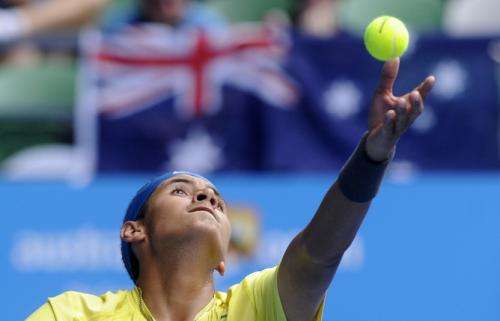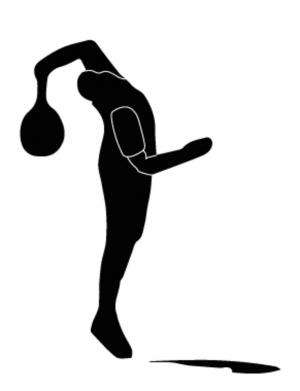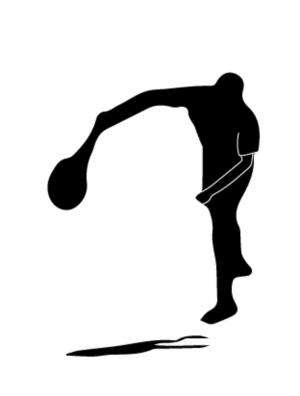The science behind Kyrgios' serve

A big serve proved its value as part of Australian wild card Nick Kyrgios' game yesterday, with 37 aces in his fourth round Wimbledon victory over world number one Rafael Nadal.
Kyrgios, the first player born in the 1990s to beat Nadal, only dropped serve once as won in four sets: 7-6 (7-5), 5-7, 7-6 (7-5), 6-3.
Krygios currently leads all players in aces at Wimbledon, serving a whopping 113 aces in his four matches to date. So just how does Kyrgios serve accurately at such blistering speeds of 214km/hr?
The serve begins every point and is the only stroke in which the player has complete control over, making it one of the most important strokes in tennis.
It's no surprise that coaches and players spend countless hours developing and refining their serve. Here are a few key biomechanics concepts evident in Kyrgios' serve that undoubtedly help the teenager produce such a powerful and effective serve.
Ground reaction forces and elastic energy
Leg drive is crucial in the development of a powerful serve. It forms the foundation of the "kinematic chain", providing the necessary base for high speed trunk and upper arm rotations which happen later in the serve.
In the video above you can see Kyrios bend his knees and push up to create ground reaction forces, allowing him to drive his body upwards and forwards to the ball. This is called vertical linear momentum.
Kyrgios uses this vertical linear momentum to drive his hitting shoulder up, which results in a faster-moving racquet.
Effective leg drive is also crucial to allow the shoulder to reach a position of maximum external rotation (away from his body). Kyrgios' leg drive forces the racquet downward and away from his body.
In this position, you can see Kyrgios' shoulder is externally rotated and his hitting arm is almost horizontal.
This stretches his shoulder and trunk muscles, storing elastic energy. As its name suggests, this stored elastic energy is then used to contract those muscles, forcefully rotating the shoulder inwards.
Up to 40% of racquet velocity when it comes in contact with the ball is developed by forceful internal rotation of the shoulder.
Developing angular momentum
A tennis player's trunk rotates in three ways to build angular momentum during the service action.

In his forward swing you can see Kyrgios rotate his trunk in three ways:
- forward in a somersault direction (sagittal plane)
- shoulder over shoulder in a cartwheel direction (coronal or frontal plane)
- clockwise and counter-clockwise (twist) about the long axis (transverse plane)
The rotation of the trunk in all three planes is critical to create momentum which can be transferred to the racquet arm to increase the speed of the racquet (and therefore the ball) at impact.
There is no question that Kyrgios' serve plays a critical role in his game.

After years of practice improving and refining his technique, he is now a fine example of how mastering the key biomechanics principles can help a player generate enough speed and accuracy to terrorise even the most daunting opponents.
Source: The Conversation
This story is published courtesy of The Conversation (under Creative Commons-Attribution/No derivatives).
![]()




















